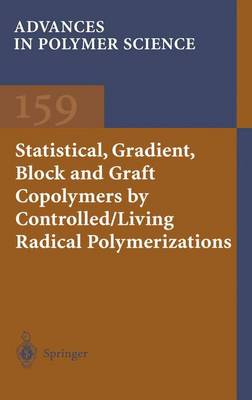The design and the realisation of well defined polymer architectures has become an important goal in macromolecular science. The prerequisite for achieving this goal is the availability of controlled polymerisation reactions. Living anionic polymerisation was the first reaction fulfilling these requirements. Cationic polymerisation only came into play when it was realised that it was possible to create an equilibrium between active and dormant species with the fraction of the dormant species being far superior to that of active ones. A corresponding principle applies to controlled radical polymerisation per formed in quite a number of modes such as nitroxide mediated polymerisation (NMP), atom transfer radical polymerisation (ATRP), reversible addition frag mentation chain transfer (RAFT) or catalytic chain transfer (CCT) reactions. All of these variants of controlled radical polymerisation lead to well defined archi tectures with the particular advantage that a much larger number of monomers are suitable and the reaction conditions are much less demanding than those of living ionic polymerisation reactions. Although in controlled radical polymerisation, termination reactions cannot be excluded completely, they are limited in their extent and consequently the mol ecular weight is controlled, the polydispersity index is small and functionalities can be attached to the macromolecules. These features are indicative of the real isation of well defined polymer architectures such as block copolymers, star shaped and comb shaped copolymers.
- ISBN13 9783642077524
- Publish Date 18 April 2012 (first published 7 August 2002)
- Publish Status Active
- Publish Country DE
- Publisher Springer-Verlag Berlin and Heidelberg GmbH & Co. KG
- Imprint Springer-Verlag Berlin and Heidelberg GmbH & Co. K
- Edition Softcover reprint of the original 1st ed. 2002
- Format Paperback
- Pages 192
- Language English
